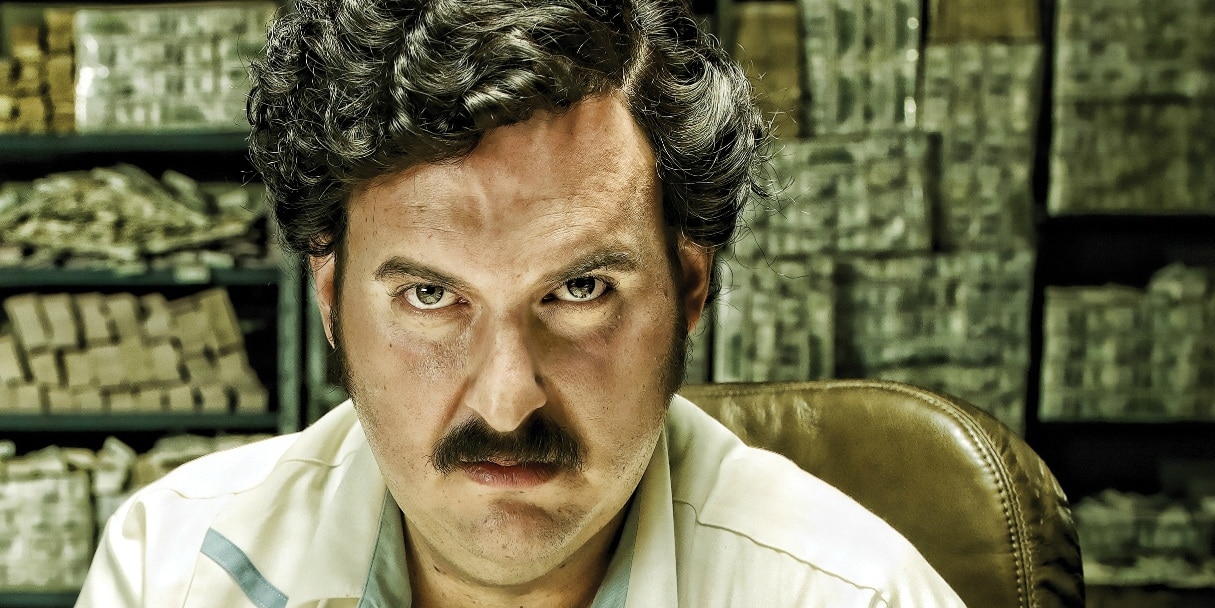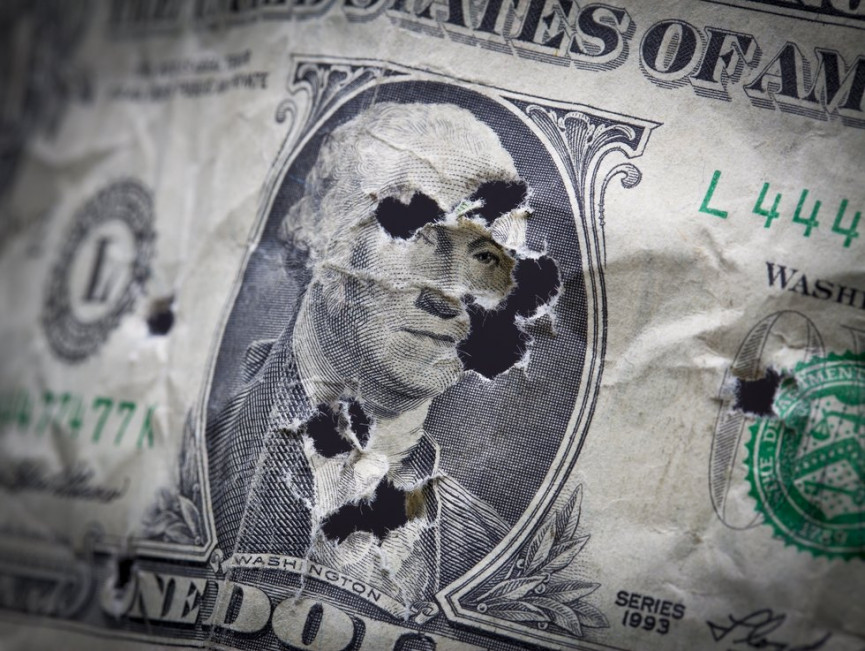Pablo Escobar's rise to power as the most notorious drug lord in history is intrinsically linked to his extraordinary wealth. His Medellín Cartel generated billions in revenue annually, making him one of the richest criminals in the world. But how much money did Pablo Escobar make per day? This article dives deep into the financial empire of the man who controlled 80% of the global cocaine market in the 1980s.
Pablo Escobar's story is not just about crime and violence; it's about the economics of drug trafficking, the scale of operations, and the immense wealth it generated. Understanding his daily earnings requires examining the structure of his cartel, the cocaine trade, and the global demand for drugs during his reign.
This article explores the financial details of Pablo Escobar's operations, his daily earnings, and the lasting impact of his wealth on Colombia and the world. By the end, you'll have a clearer picture of how Escobar's staggering daily income was achieved and maintained.
Read also:Who Is Jay Ma The International Student Taking Instagram By Storm
Table of Contents
- Biography of Pablo Escobar
- How Much Money Did Pablo Escobar Make Per Day?
- Understanding the Medellín Cartel's Operations
- Global Demand for Cocaine in the 1980s
- Managing Escobar's Wealth
- Economic Impact of Escobar's Empire
- The Legacy of Pablo Escobar's Wealth
- Legal Consequences of Escobar's Wealth
- Comparing Escobar's Wealth to Modern-Day Figures
- Conclusion
Biography of Pablo Escobar
Early Life and Rise to Power
Pablo Emilio Escobar Gaviria was born on December 1, 1949, in Rionegro, Colombia. From humble beginnings, Escobar's early life was marked by poverty and struggle. However, his entrepreneurial spirit and willingness to take risks led him into the world of crime at a young age. Initially involved in petty crimes such as smuggling and theft, Escobar quickly realized the potential of drug trafficking.
By the late 1970s, Escobar had established the Medellín Cartel, which would become the largest cocaine trafficking organization in the world. His rise to power was fueled by a combination of ruthlessness, strategic alliances, and an unparalleled ability to control every aspect of the drug trade.
Data and Facts About Pablo Escobar
Below is a summary of key data about Pablo Escobar:
| Full Name | Pablo Emilio Escobar Gaviria |
|---|---|
| Date of Birth | December 1, 1949 |
| Place of Birth | Rionegro, Colombia |
| Date of Death | December 2, 1993 |
| Net Worth | Estimated $30 billion at his peak |
How Much Money Did Pablo Escobar Make Per Day?
Pablo Escobar's daily earnings were staggering. At the height of his power, the Medellín Cartel was generating approximately $420 million to $600 million per week from cocaine sales alone. Dividing this figure by seven days, Escobar's estimated daily income ranged from $60 million to $85 million.
These numbers are based on estimates from law enforcement agencies and financial analysts who studied the cartel's operations. While exact figures are difficult to determine due to the illicit nature of the business, it is widely accepted that Escobar was one of the wealthiest individuals in history.
Factors Influencing Daily Earnings
- Global Demand: The 1980s saw a massive increase in cocaine use, particularly in the United States, driving up prices and profits.
- Supply Chain Efficiency: Escobar's cartel controlled every step of the cocaine trade, from production to distribution, maximizing profits.
- Market Share: The Medellín Cartel dominated 80% of the global cocaine market, ensuring a steady flow of revenue.
Understanding the Medellín Cartel's Operations
The Medellín Cartel was a highly organized criminal enterprise that operated like a multinational corporation. It employed thousands of people, from farmers cultivating coca leaves to pilots transporting drugs and enforcers protecting the operation.
Read also:Movierulz Kannada 2025 Ndash Download Movies Safely And Legally
Escobar's leadership style was characterized by a combination of charisma and brutality. He cultivated a public image as a Robin Hood figure, building housing projects and sports facilities for the poor. Simultaneously, he used violence and intimidation to eliminate rivals and maintain control.
Key Components of the Cartel
- Coca Cultivation: The cartel controlled vast areas of coca farms in Colombia.
- Processing Labs: Cocaine was refined in secret labs hidden in remote areas.
- Transportation Networks: Drugs were smuggled into the U.S. using planes, boats, and even submarines.
Global Demand for Cocaine in the 1980s
The 1980s were a boom period for cocaine use, particularly in the United States. The drug's popularity was driven by its association with wealth and success, as well as its widespread availability. According to the U.S. Drug Enforcement Administration (DEA), cocaine use in the U.S. peaked in the mid-1980s, with an estimated 5.8 million users.
This surge in demand directly contributed to Escobar's astronomical daily earnings. With cocaine prices reaching $60,000 per kilogram in the U.S., the cartel's profits soared.
Managing Escobar's Wealth
Managing the vast sums of money generated by the cartel was a logistical challenge. Escobar employed a team of accountants to handle the finances, but even they struggled to keep up with the cash flow. It is estimated that the cartel spent $2,500 per month just on rubber bands to bundle the cash.
Despite his wealth, Escobar faced significant challenges in laundering and storing the money. Large amounts of cash were lost to rats and moisture, with some estimates suggesting that up to 10% of the cartel's earnings were destroyed annually.
Economic Impact of Escobar's Empire
Pablo Escobar's wealth had a profound impact on Colombia's economy. On one hand, his spending injected significant amounts of money into local businesses and infrastructure. On the other hand, the violence and corruption associated with the cartel destabilized the country and strained its resources.
The Colombian government spent billions fighting the cartel, and the conflict claimed tens of thousands of lives. Escobar's reign also tarnished Colombia's international reputation, making it synonymous with drug trafficking and violence.
The Legacy of Pablo Escobar's Wealth
Pablo Escobar's legacy is a complex mix of infamy and admiration. While he is widely regarded as a ruthless criminal, some in Colombia still view him as a hero who helped the poor. His wealth and power continue to fascinate people around the world, inspiring books, documentaries, and TV series.
Escobar's story serves as a cautionary tale about the dangers of drug trafficking and the devastating impact it can have on individuals and societies. His daily earnings, once a symbol of success, now stand as a reminder of the costs of greed and corruption.
Legal Consequences of Escobar's Wealth
Escobar's wealth ultimately led to his downfall. The Colombian government, with support from the U.S., launched a massive campaign to dismantle the Medellín Cartel. Escobar was killed in a shootout with police on December 2, 1993, but his death did not end the drug trade.
The legal consequences of Escobar's wealth extended beyond his own life. His family faced numerous legal challenges, and much of his assets were seized or destroyed. However, the scale of his operations ensured that the cocaine trade continued even after his death.
Comparing Escobar's Wealth to Modern-Day Figures
Escobar's daily earnings of $60 million to $85 million far exceed those of most modern-day billionaires. For comparison, consider the following:
- Elon Musk: As of 2023, Elon Musk earns an estimated $10 million to $20 million per day from his various businesses.
- Jeff Bezos: Jeff Bezos's daily earnings from Amazon and other ventures are estimated at $5 million to $10 million.
While these figures are impressive, they pale in comparison to Escobar's illicit income. This highlights the extraordinary scale of the drug trade during his reign.
Conclusion
Pablo Escobar's daily earnings of $60 million to $85 million were a testament to the immense wealth generated by the Medellín Cartel. His story is one of power, greed, and the devastating impact of drug trafficking on individuals and societies.
As we reflect on Escobar's legacy, it is important to recognize the lessons learned from his reign. The fight against drug trafficking continues, and understanding the economics of the trade is crucial in addressing its root causes.
We invite you to share your thoughts and insights in the comments section below. Additionally, explore other articles on our site to learn more about the history and impact of the global drug trade.


